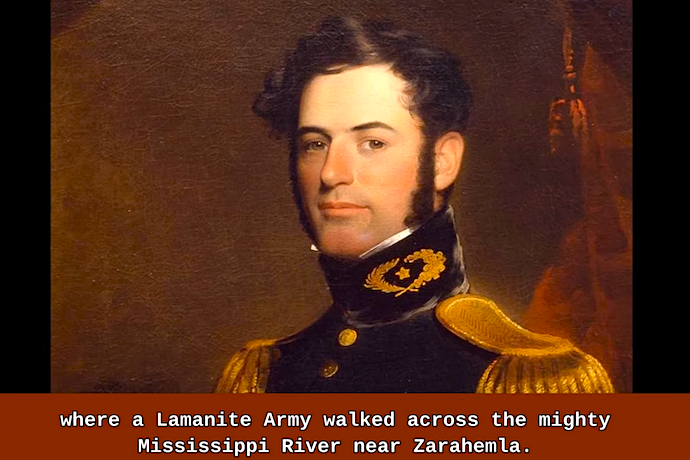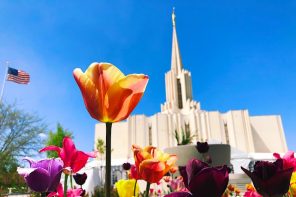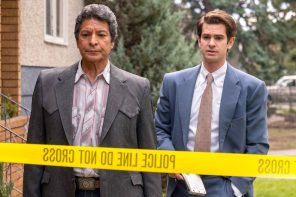News outlets like Iowa Starting Line and The Salt Lake Tribune have recently reported on a group called The Heartland Research Group (HRG) which has taken to the cornfields of Montrose, Iowa in search of Zarahemla, a city frequently mentioned in the Book of Mormon. From the coverage one might reasonably conclude that a Latter-day Saint group is simply seeking to find corroboration for their scriptures—which is certainly the case—but lurking beneath the surface is something quite a bit darker.
The HRG is one of several groups that believes in what’s known as the Heartland model; to them, the Book of Mormon narrative is a historical account of indigenous people in the United States, specifically in Heartland America. The theory first became widely known in 1994 when Wayne May presented research that, he claimed, supported it.
The timing is significant because the Heartland model appears to be a reaction to a significant increase in the LDS population in Central and South America. While the LDS leadership began to envision a global Church, proponents of the Heartland model in the US not only continued to see themselves as part of an American-centric faith, they sought to cement that status by grounding it in “history.”
This clinging to an American-centric faith originates from their belief that the United States is, literally, the promised land. A prominent example of Heartland research is Prophecies and Promises, a book by Bruce A. Porter and Rod Meldrum who cite American-centric Book of Mormon geography—i.e. the Heartland model—as “having an effect on the resurgence of Book of Mormon interest, study, and excitement akin to what the Dead Sea Scrolls discovery did for spurring Biblical energies.”
Their interpretation of historical sources led them to conclude that when early Church leaders spoke of a promised land, they were specifically referring to the United States of America. In contrast, Mormon Studies scholars increasingly demonstrated that when early Church leaders spoke of “this land” or “this country” or “America,” they did not mean the United States of America, but rather the Western continent. Proponents of the Heartland model, on the other hand, who believe that early Church leaders saw the United States as the promised land, designate American nationalism as their interpretative lens. Their geography model rests upon this American nationalism that they saw in these early historical sources.
In turn, Heartland dependence on American nationalism has led to associations with right-wing ideologies, including QAnon, anti-vaccination stances, colonial narratives, creationism, and white supremacy. These ideologies aren’t incidental to the Heartlander movement, they’re foundational. Christian nationalism has become central to their articulation of faith, and has led them to superimpose their Christian belief on indigenous persons by declaring them descendants of Book of Mormon figures.
Many proponents of the Heartland movement juxtapose QAnon conspiracies and white supremacist views on immigration with the Book of Mormon to justify their support for right-wing policies. Their chosen land narrative is frequently found in their writing. For example, as LDS author Rian Nelson writes, “First of all the illegal immigrants coming from our southern border are mostly Asian and if they were chosen by the Lord to come to America, the Lord would allow them here without a lot of legal hankering.”
This position is further exacerbated by the Heartland belief that, not only is the United States of America a chosen land, but that the chosen people came to America from Europe. The language of Anglo-Saxon heritage and bloodlines cements the connection between the Heartland movement and white supremacy and their website even features a video lauding and thanking Confederate general Robert E. Lee without reservation for how they believed his work in the war contributed to their being able to find Zarahemla.
Prior to the formation of what is now the United States, Montrose, Iowa was Sioux, Cherokee, and Iroquois land. This excavation perpetuates religious colonialism and superimposes a Mormon narrative onto indigenous persons, specifically a narrative that champions European colonialism and American Christian nationalism. The Heartland Research Group both violently destroys and recontextualizes indigenous material culture. This act isn’t incidental to the Heartland model, it’s foundational.
As this excavation continues to unfold, and the Heartland model gains more attention, their origins and associations will only become more significant. This isn’t a religious hobby or a benign example of religious exuberance; the excavation is the product of a religious ideology with a legacy of religious nationalism and white supremacy. They may be using state-of-the-art equipment in the effort, but there’s nothing new about this toxic perspective.





